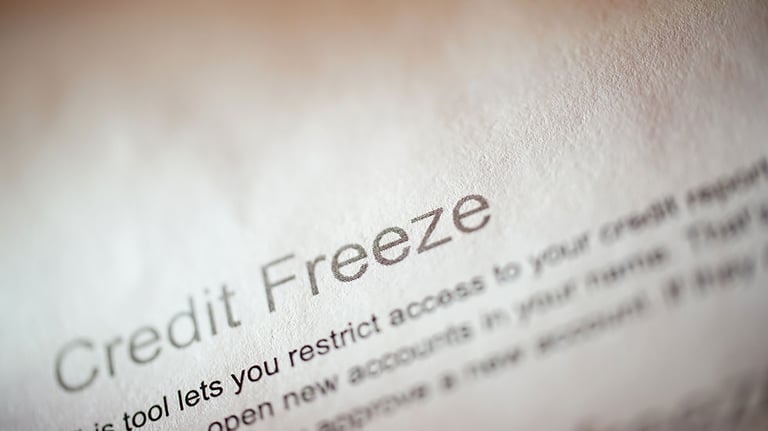When Is A Credit Freeze A Good Idea
Find out what a credit freeze is, when you should do it, and how to get started


In an era marked by increasing concerns over identity theft and financial fraud, a credit freeze is a formidable shield against threats to your financial security. This protective measure empowers individuals to limit access to their credit reports, rendering it significantly more difficult for identity thieves to open unauthorized accounts in their name. While implementing a credit freeze is a straightforward process, understanding when and how to utilize this tool effectively can make a crucial difference in safeguarding your financial well-being. Here's how it works.

What is a credit freeze?
A credit freeze, also known as a security freeze, is a tool that allows individuals to restrict access to their credit reports. A credit freeze prohibits potential lenders or creditors from viewing your credit report, so its primary use is preventing identity thieves or fraudsters from opening new accounts in your name.
A credit freeze is a powerful tool in protecting your financial security and is free to implement. However, it may also inconvenience you if you need to apply for new credit quickly. If you're planning to make major financial decisions (like applying for a mortgage or car loan), you must temporarily lift the freeze to apply for the necessary credit.
When is a credit freeze a good idea?
The primary scenario in which a credit freeze can be a wise choice is when an identity thief or fraudster is using your information to open credit accounts. If you're experiencing identity theft, it's highly recommended to place a credit freeze. Doing so will prevent further unauthorized credit accounts from being opened in your name. Then, you can thaw your credit after resolving the identity theft issues. Remember, a credit freeze can't stop identity theft, but it can save you from some of the consequences.

How to freeze your credit
The process to freeze your credit involves a few steps, and you can complete the process online within minutes. The first step is to gather all the necessary information. You'll need your personal information at hand to verify your identity, including your full name, Social Security number, date of birth, and current address. In addition, depending on how you initiate the freeze (online, over the phone, or by mail), you may need the following documents:
- A copy of your passport, driver’s license, or military ID
- Copies of tax documents, bank statements, or utility bills for proof of address
Then, you'll initiate the freeze with the three major credit bureaus: Equifax, Experian, and TransUnion. It's essential to freeze your credit with each bureau to ensure comprehensive protection. So, depending on your preference, you can call each credit bureau or visit their website to provide the needed information and implement the freeze.
How to unfreeze your credit
The process for unfreezing your credit is similar to freezing it. You can visit each credit bureau’s website or contact them by phone to ask for a credit thaw. After receiving the necessary personal information to verify your identity, each bureau will unfreeze your credit.
